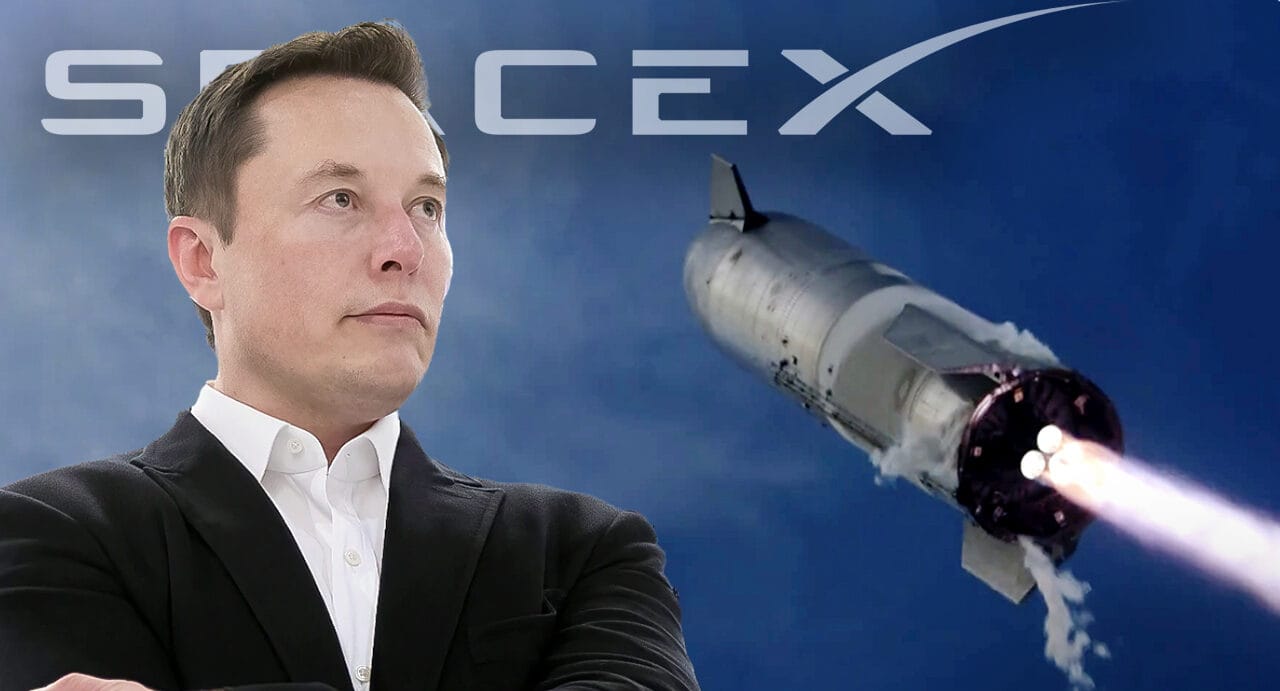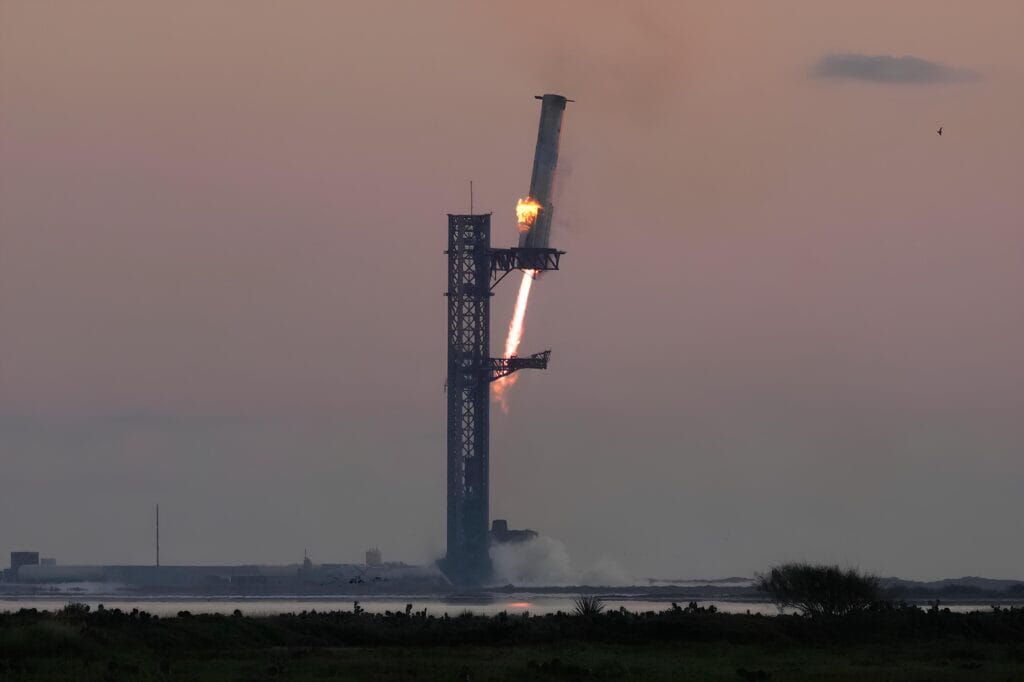
The Journey to Success: Learning from Failures
SpaceX’s road to successfully catching Starship was anything but smooth. Before this milestone, several attempts to recover Starship ended in failure, with dramatic explosions upon landing or mid-flight malfunctions. The test flights revealed critical design flaws, especially during the high-stress re-entry phase when the spacecraft would often lose control or fail to land intact. Despite these setbacks, each failure was viewed as a learning opportunity, consistent with SpaceX’s philosophy of iterating quickly and learning from mistakes.
SpaceX’s engineers remained undeterred, meticulously analyzing data from each failed test flight. Over the course of numerous revisions, they fine-tuned the spacecraft’s systems to withstand the rigors of re-entry, control its descent, and land safely back on Earth. This hard-earned success has now propelled Starship into the annals of aerospace history.
Hard Work Behind Starship’s Success
Achieving the successful recovery of Starship is the result of years of relentless effort by a talented team of engineers, designers, and scientists. SpaceX has spent years refining its approach to reusable rocketry. The company’s engineers have pushed the boundaries of modern aerospace technology, developing some of the most advanced flight and landing systems ever created.
One of the most significant challenges has been controlling Starship’s descent. The massive spacecraft must survive re-entry into Earth’s atmosphere at incredible speeds, requiring precise maneuvering to avoid catastrophic failure. Through countless simulations, wind tunnel tests, and trial-and-error, the SpaceX team developed a landing system that includes sophisticated fins, thrusters, and a heat shield capable of withstanding temperatures of over 1,600 degrees Celsius. After years of effort and significant investment, SpaceX has finally achieved its goal: a successful Starship landing and recovery.
Advanced Technology:
The Key to Success
The successful recovery of Starship would not have been possible without cutting-edge technology. The spacecraft is equipped with a complex system of grid fins, Raptor engines, and heat shields that enable it to perform the “belly flop” maneuver during its descent. This technique allows Starship to use the Earth’s atmosphere to slow down before reigniting its engines for a controlled vertical landing. It is a delicate balance of physics, engineering, and software.
Additionally, the Raptor engines powering Starship are among the most powerful and efficient rocket engines ever built. Designed to be reused multiple times, they burn a mixture of methane and liquid oxygen, which is more sustainable and efficient than traditional rocket fuels. These engines are crucial to Starship’s reusability, enabling it to launch and land repeatedly without extensive refurbishment.
The recovery process also involves highly autonomous drone ships positioned in the ocean, which serve as landing platforms for the spacecraft. This technology eliminates the need for land-based recovery, allowing SpaceX to recover rockets even in the most remote areas.
Future Plans:
The Road to Mars and Beyond
The successful recovery of Starship is a major milestone in SpaceX’s long-term plans to explore the Moon, Mars, and eventually other planets. Elon Musk has been vocal about his vision to send humans to Mars within the next decade, and Starship is the spacecraft that will make this possible. Its fully reusable design means that missions to Mars will be significantly more affordable than traditional spacecraft, which are discarded after a single use.
Before venturing to Mars, Starship is expected to play a crucial role in NASA’s Artemis program, which aims to return humans to the Moon by 2025. SpaceX has been selected as NASA’s partner to develop a lunar lander based on Starship’s design. This success with Starship recovery is a promising indicator that the company is well on track to meet these ambitious timelines.
Beyond NASA missions, SpaceX envisions using Starship for a wide range of purposes, including satellite deployment, space tourism, and even Earth-to-Earth transportation, where Starship could be used to travel between distant points on Earth in a matter of minutes.
A New Space Race:
More Companies
SpaceX’s success in catching Starship is pushing other aerospace companies to innovate. Competitors such as Blue Origin, Rocket Lab, and Boeing are now exploring reusable rocket technology, recognizing that reusability is key to reducing costs and expanding access to space. Blue Origin, led by Amazon’s Jeff Bezos, is working on its New Glenn rocket, which aims to be partially reusable. Meanwhile, Rocket Lab has begun testing a recovery process for its smaller Electron rockets, though it is far behind SpaceX in terms of scale and complexity.
As more companies embrace reusable rockets, the cost of launching satellites, conducting scientific research, and carrying out crewed missions will decrease, making space more accessible to both governments and private companies. This new era of competition will accelerate technological advancements and fuel a new space race that benefits the entire industry.
Impact of This Achievement: Cost Savings & New
Catching Starship successfully represents a transformative moment in space travel. One of the biggest advantages of reusability is the reduction in launch costs. Traditionally, rockets are only used once, meaning each launch involves building a brand-new spacecraft. By reusing rockets, SpaceX can cut the cost of launching missions dramatically. This cost efficiency opens the door to more frequent space missions, more accessible space tourism, and the possibility of long-term habitation on other celestial bodies.
Additionally, this success brings the dream of interplanetary travel closer to reality. By perfecting the technology for reusing spacecraft like Starship, SpaceX is laying the groundwork for sustained human presence on the Moon, Mars, and potentially beyond. It’s not just about getting to space but staying there and using resources efficiently.
Conclusion:
Dawn of a New Space Age
SpaceX’s successful recovery of Starship is a monumental achievement that has far-reaching implications for the future of space travel. What once seemed like science fiction—reusable rockets, affordable space travel, and the colonization of other planets—is now becoming a reality. SpaceX has shown that with persistence, innovation, and cutting-edge technology, even the most ambitious goals can be achieved.
As SpaceX continues to push the boundaries of what’s possible, other companies will follow suit, driving a new era of space exploration that promises to revolutionize our understanding of the universe and our place in it. The successful catch of Starship is just the beginning of what promises to be an exciting future for humanity’s journey to the stars.
Artical written by V.Harishram

